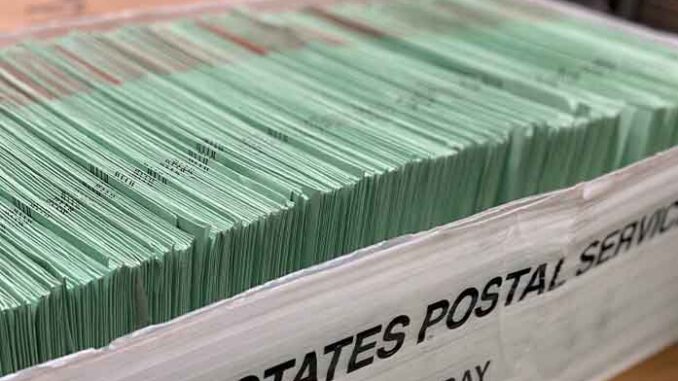
It was announced last week that some members of the Pinal County’s Board of Supervisors are interested in finding out if it would be practical to manually count ballots for next year’s election cycle instead of using machine tabulators.
Yet they were quickly chastised by critics for pursuing something purportedly illegal. Those critics argue that Arizona law requires counties to electronically tabulate ballots.
Both the Arizona Attorney General’s Office and the Arizona Secretary of State’s Office have already expressed concern “about the legality” of Pinal County’s interest in manual tabulation, sometimes referred to a hand tabulation.
Yet neither office referenced a specific statute to support any concern.
Proponents of manual tabulation argue that if ballots must be tabulated by machine, then there would be no need for several of the more than 120 Arizona Revised Statutes under Title 16, Chapter 4 that deal with the conduct of elections. Among those statutes are ones which apply only “when,” “if,” or “whether” ballots are going to be counted electronically.
One such law is ARS 16-663(B). It states that when a court orders a recount of votes initially tabulated on electronic voting equipment, then ARS 16-664 defines the recount process.
“If Arizona law did not allow for a county to manually tabulate then there would be no need for ARS 16-663(B) to alert us to 16-664,” an attorney told Arizona Daily Independent. “Nor for several other statutes to contain permissive language in regard to using or not using machines to tabulate ballots.”
Some of those other statutes include ARS 16-602(A) which applies to any “election in which the votes are cast on an electronic voting machine or tabulator…” And ARS 16-448, which reads that “whenever ballots are to be counted by electronic data processing equipment…”
There is also ARS 16-443 which reads that at all “state, county, city or town elections…ballots or votes may be cast, recorded and counted by voting or marking devices and vote tabulating devices as provided in this article.” Along
with ARS 16-444(B) that reads any “provision of law that conflicts with this article does not apply to the elections in which electronic tabulating devices are used.”
“Next time someone makes a statement that manually tabulating ballots is illegal in Arizona, it is important to demand that the person point to any state law backing up their allegation,” the attorney said. “People should not be allowed to shut down legitimate government discussions by throwing out unsubstantiated accusations.”
Pinal County is not the only public body that has expressed an interest in looking at whether manually counting ballots is feasible.
Last year Cochise County began plans for a May 16 election to approve a one-half cent sales tax for up to 25 years to fund a new jail complex. With just one “yes or no” race on the ballot, two of the county’s supervisors questioned whether it was an optimal opportunity to try manual tabulation.
In the end the idea was not pursued, but there was nothing put forth to show elections officials were barred from including manual tabulation in their election administration plan had they wanted to go that route.
Some opponents of manual ballot counting point to an opinion recently released by Attorney General Kris Mayes, who overturned an opinion provided last year by then-Attorney General Mark Brnovich.
The opinion dealt with the specific question of whether a county board of supervisors may order a 100 percent hand count “audit” of the county’s electronically tabulated election results. The hand count audit required in ARS starts out with a very small percentage of votes being audited.
Mayes’ opinion is that a full hand count audit “is only expected to occur if there are discrepancies with the electronic tabulation—not as a matter of course.” She added that in her opinion parts of ARS 16-602 do “not permit an initial full hand count of all ballots,” leaving off the word audit.
Yet if 16-602 does not apply specifically to conducting post-tabulation hand count audits, then every other statute within Title 16 that refers to auditing machine tabulation results would be unnecessary, according to manual tabulation advocates.
The manual tabulation interest expressed in Cochise County and Pinal County is timely, as counties need to begin planning for their 2024 elections in the next few months.
Even those who support machine tabulation over hand counting note the importance of ensuring the issue be debated on facts, not misrepresentations.
The Brennan Center For Justice railed against Cochise County’s supervisors last year for seizing on purported “concerns” with electronic voting systems, even though the supervisors admitted there was no evidence the county’s machines had been manipulated or tampered with.
The group also pointed out that the more races on a ballot means the more time –and workers – needed to complete tabulation, pushing the release of final results from days to weeks after election day. The Brennan Center also warned of the specter of bad actors who could intentionally miscount votes to create delays or chaos.
But the group did not attack the legality behind what Cochise County was considering. It will likely be an issue the Arizona Supreme Court could have to address in the coming months if state lawmakers do not clarify the issue soon.
